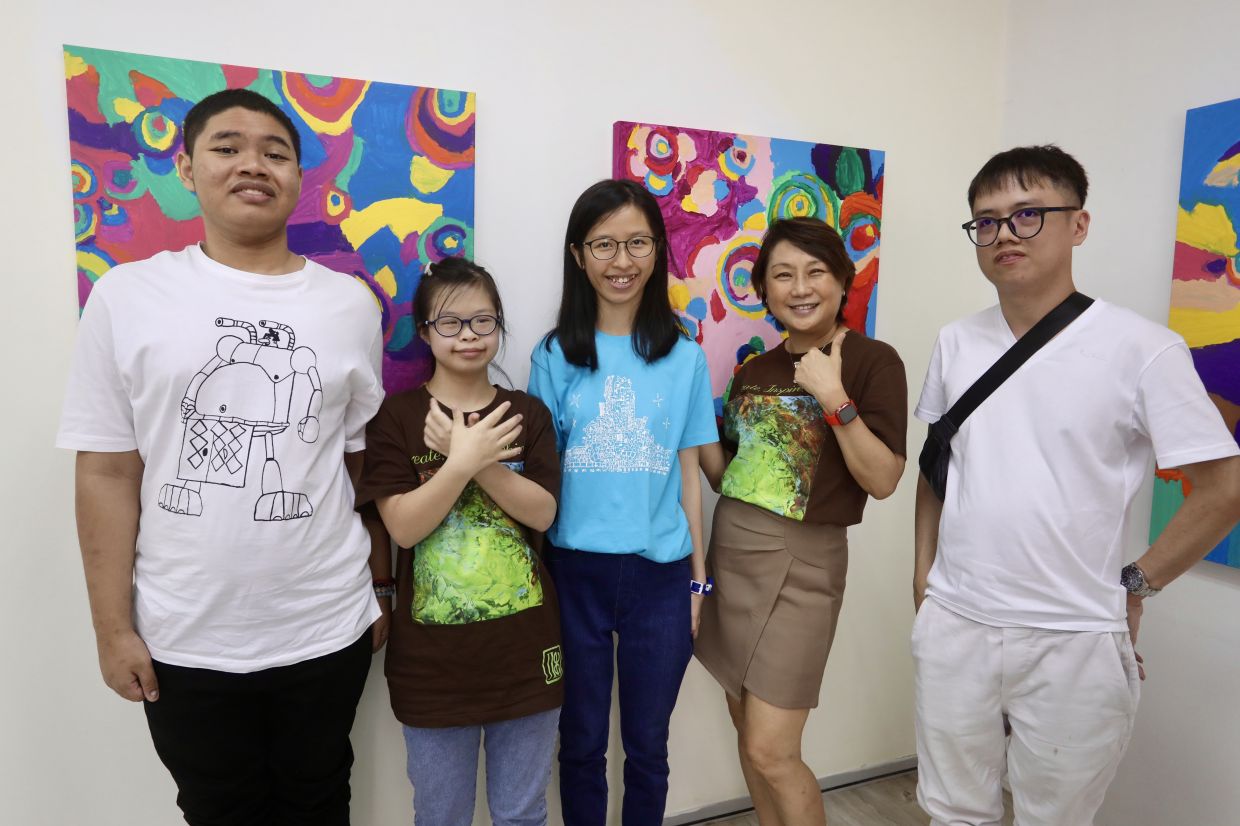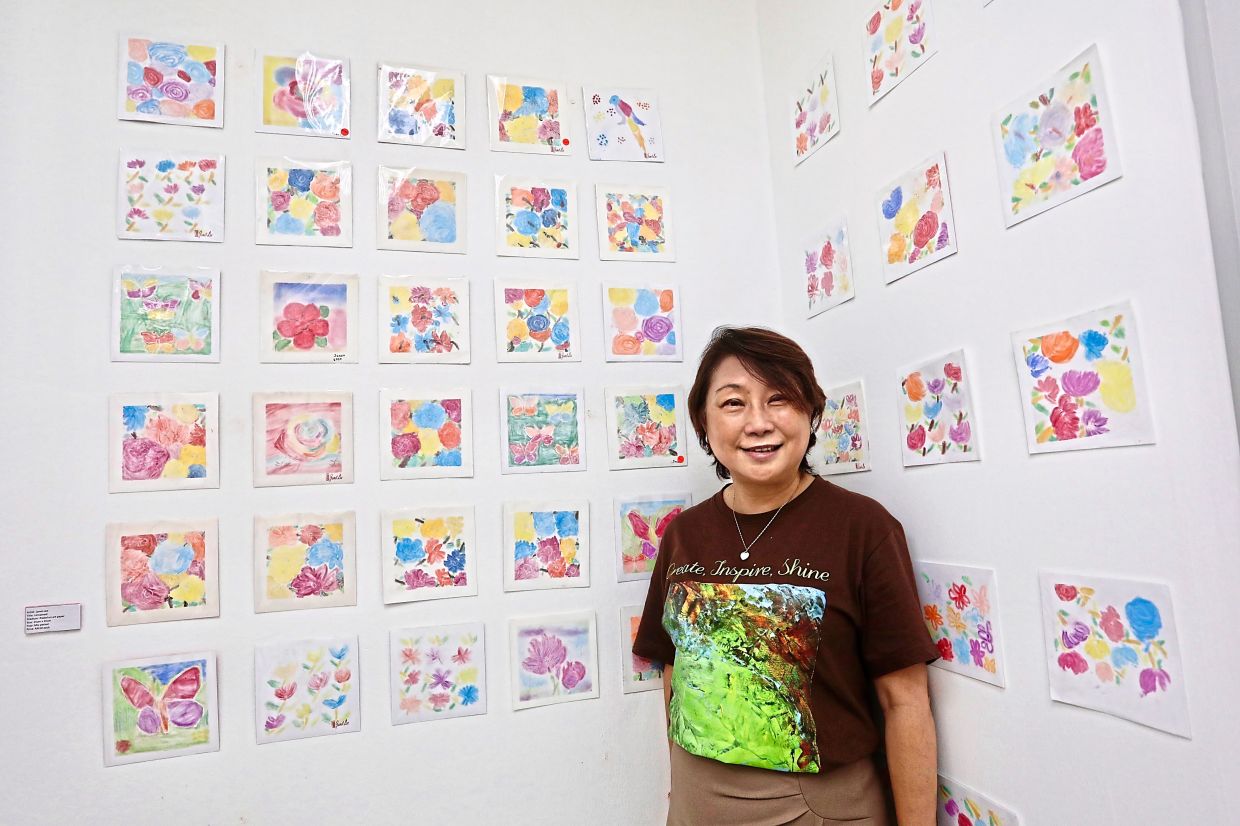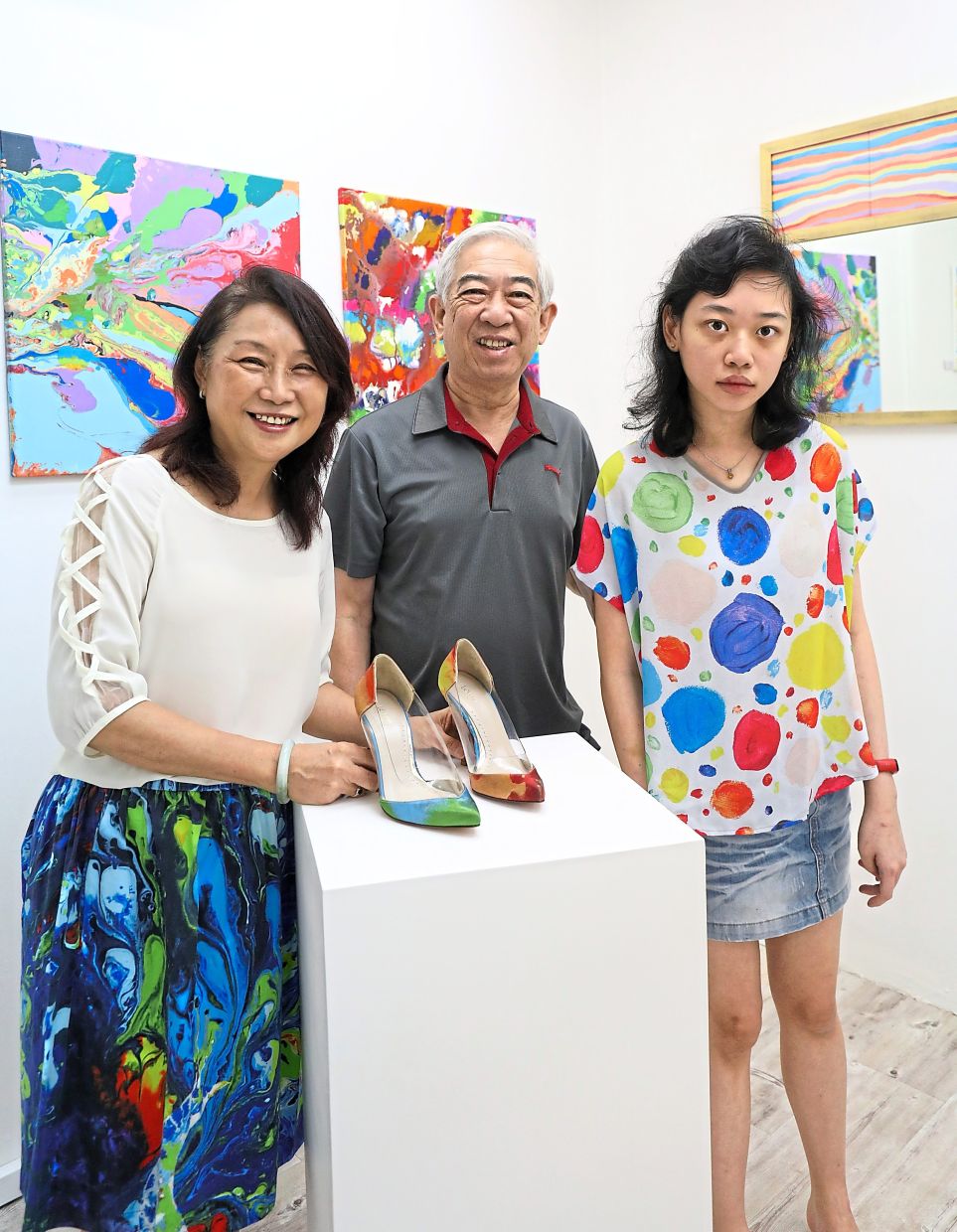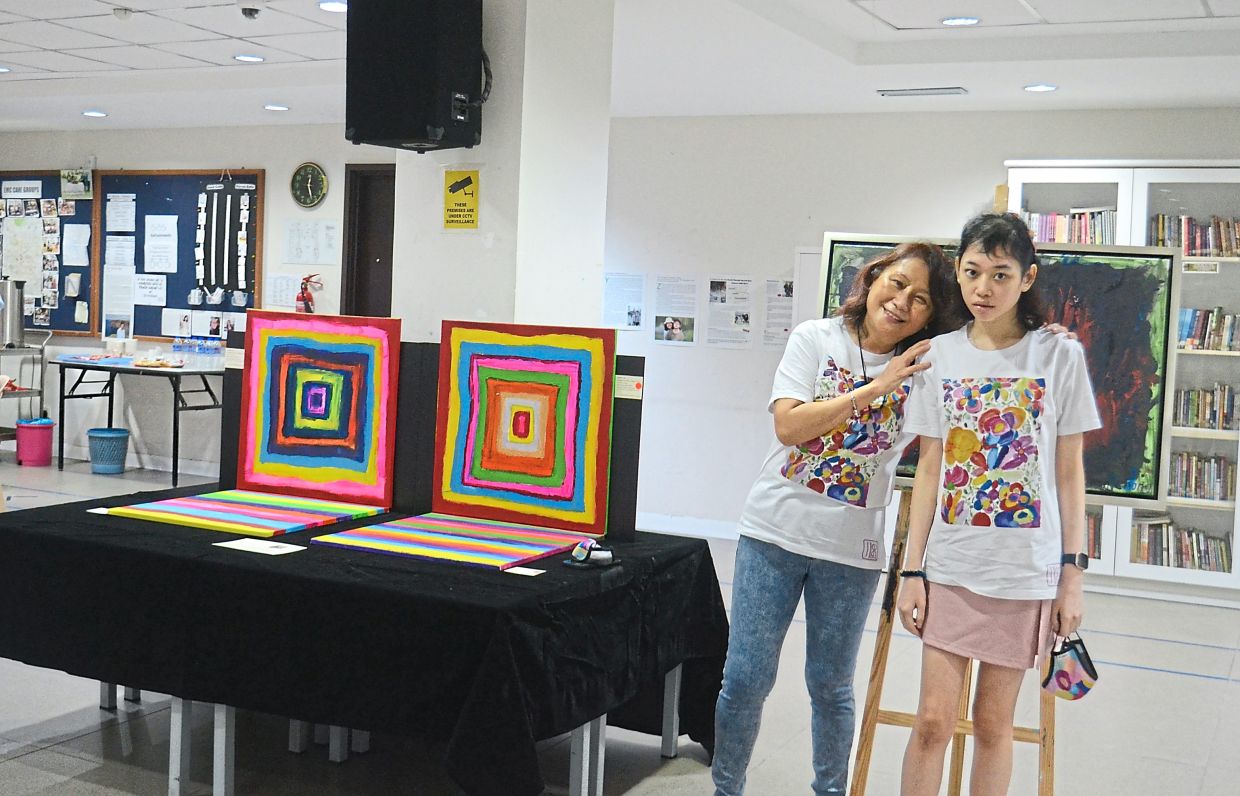Moi (left) with her late daughter, epileptic artist Janet Lee, at their gallery in 2020. The gallery is now part of her initiative to help other mothers of neurodivergent artists. Photo: Joyce Moi
This Mothers Day, 68-year-old entrepreneur Joyce Moi will be in Kuala Lumpur, taking part in a carnival that holds a lot of meaning for her: It is an event that promotes inclusion and neurodiversity.
Moi is mother to two girls: Joanne Lee, 41, and Janet Lee, an epileptic artist who sadly passed away in July last year at the age of 33, after contracting ovarian cancer.
“It’s my first year celebrating Mothers Day without Janet being here with us. But being involved in something that is connected to her fills the gap,” says Moi.
When you’re a mother, sometimes, you’re faced with choices that can make a great difference in your child’s life, especially if your child is neuro-divergent, says Moi.
But even though her daughter has passed on, Janet’s legacy lives on through an initiative Moi started called the House of Janet Lee. Its aim is to mentor mothers of other neuro-divergent artists so that they can help their children carve out a future for themselves.
And, Moi’s involvement in the carnival on Mothers Day is a small part of this initiative.
“Our participation in this Empowerfest Carnival organised by Oasis Place reflects our commitment to using art to foster community connections and enhance cultural awareness,” she says.
Speaking at the launch of the initiative at the Janet Lee Gallery (an art space Moi opened in 2020 to exhibit her late daughter’s art) recently, Moi talks about her younger daughter who “was born normal, but had a seizure and was diagnosed as epileptic at one-and-a-half years old”.
“She had intractable epilepsy which can’t be controlled by medication and would fall to the floor in a seizure, often ending up with bruises, and bleeding.
“She also wasn’t able to read or write until she was 16. When we sent her to specialists earlier, nobody could understand why.
“Then, while we were in Australia, we met an educational consultant who said Janet’s reading and writing issues were probably hindered because of her vision. While her eyes and brain were fine, the connection between them wasn’t.”
Moi recalls the specialist had said that “Janet’s vision problems might be what’s hindering her learning, and things could change if that was addressed”.
She adds that she was faced with two choices.
“I could either accept Janet’s limitations and just focus on helping her learn life skills, or try to go all the way and help her reach her full potential.”
“I chose to try.”
The decision not to give up made all the difference in her daughter’s life.
“Janet was a colourist (artist specialising in colours). Her paintings are an expression of her thoughts and feelings through colours.
“Each painting on the walls of the gallery is part of her work through the years,” she says.
Recalling her journey as a mother, Moi shares about the milestone moment when they started Janet Lee Gallery in 2020 during the pandemic. Moi says that she saw how Janet started showing a “sense of responsibility and ownership” with the opening of the gallery.“It might be difficult to explain certain things to Janet. But when she sees her paintings fill the empty walls of the gallery, and subsequently, the empty spaces on the walls when the paintings are sold, this resonates with her that art is her career and she has to paint every day,” she says.“By the time Janet passed on, she was also able to use WhatsApp, Facebook, and YouTube. She could even order food from a menu.
“That might not seem very advanced to many, but for someone who’s neuro-divergent and diagnosed as intellectually and developmentally disabled, she had come very far and as her mother, I’m really proud of her,” she adds.
Read more: Intellectually-challenged Malaysian artist Janet Lee's indomitable spirit
Living life in colour
Moi highlights that her daughter wasn’t like other artists who painted landscapes, still life, or portraits.
“When you enter the gallery, you get a very different feel from traditional galleries. This is a good eye opener for other mothers/parents of neuro-divergent artists that ‘beauty is in the eye of the beholder’.
“We sometimes think something doesn’t conform to usual standards of beauty, it doesn’t mean that it’s not art – which was exactly what Janet encountered in her younger years.
“As her mum, I tried to encourage her to develop her art skills when she was younger, but the teachers told me she’s not gifted as an artist because she couldn’t draw and paint the conventional way.
“Nevertheless, because of her love for colours, I decided to continue. And I’m really glad that we did,” she shares.
After Janet passed on, Moi admits she wondered whether to continue the art journey. It was her family – her husband Lee Thiam and elder daughter Joanne – who encouraged her.
“If the intention is to help people, then why stop even if Janet is no longer around?”was what Joanne had said to her, reveals Moi.
It was with this in mind that the House of Janet Lee – a name suggested by Joanne – was launched end of last year, to support and mentor the mothers of similarly talented artists.
Moi also realised that the gallery could give hope to mothers who have children facing challenges and who are wondering what they can do to help their children.
“The journey was so tough for us. It would be similarly tough for other such mothers,” she says.
At the launch, the gallery also showcased the art of four other neuro-divergent artists who were accompanied by their mothers: Ng Yi Shen and mother Angie Yong; Thong Kah Wei and mother Thong Yoke Ki; Alicia Lee and mother Ivy Lee; and Shana Lim and mother Yvonne Yap.
Two of them will also be taking part in the Empowerfest Carnival together with her, she says.
They are Ng and his mother Yong, and Kah Wei and his mother Yoke Ki, she adds.
Read more: Double win for epileptic artist and her mother at Women Glamour Awards 2021
But Moi says that she is particular about the mothers whom she chooses to mentor for each cohort.
“I really want these mothers to own it themselves, so the selection process is very important. They’ve to be able to empower their own children because every child is different. I can only share with them my journey, experiences, challenges, and point of view. Ultimately, it’s up to them to decide how they proceed with their children,” she says.
“The platform represents positivity, empowerment (the support of the family behind them), and gratitude,” she adds.
It’s our way of giving back to society and to continue my late daughter’s legacy, she concludes.


















